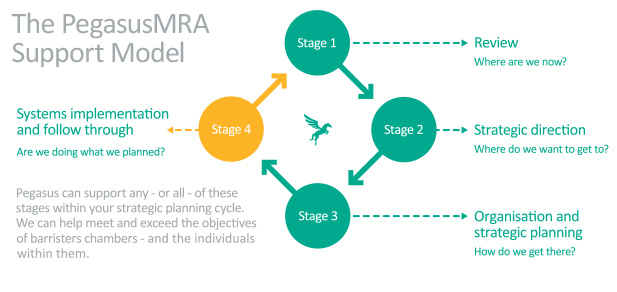Face the future with confidence
Given the palpable effects of the financial recession; the changing regulatory landscape; changes in legal funding and changing client needs it’s more important than ever that the chambers business model is properly structured, organised and relevant for its clients and for its members moving forward.
Those chambers that are not re-thinking or honing their business model will find increasing pressure upon instruction and work levels, profitability and member returns, as a result of a crowded legal market which is being extended by the increase in ABS providers.
Chambers, therefore, need to take a more strategic and holistic view of their business models and profiles generally – as to where they see their future – perhaps along a spectrum of options:
A conventional referral model;
- A ‘pick-n-mix’ of traditional referral work, public access and/or conducting litigation;
- As a mainstream direct/public access chambers; or
- As part of a joint law firm/chambers model.
For instance, it is our experience that few chambers currently have a clear understanding of the potential and opportunity being offered by public access and the conduct of litigation. The key to this understanding will be how to plan, market and leverage these areas (and other similar) opportunities within the unique culture of each chambers.
As specialist providers of personalised and targeted strategic and organisational consultancy services and training to chambers, PegasusMRA consistently finds that when professional people can face the future with confidence, it has a profound and positive effect on their individual well-being, confidence and performance. This positive individual effect then reflects upon the brand of chambers as a whole.
Therefore, the benefits of boosting certainty, confidence, energy, drive and determination cannot be overstated.
The PegasusMRA team has a unique range of skills and experience honed from working within and for chambers, which enables them to proactively and effectively facilitate and support this strategic planning process.
Please Contact us to discuss your needs. You can also download a copy of our Strategic Planning Model.
The PegasusMRA model of the strategic planning process for chambers is:

